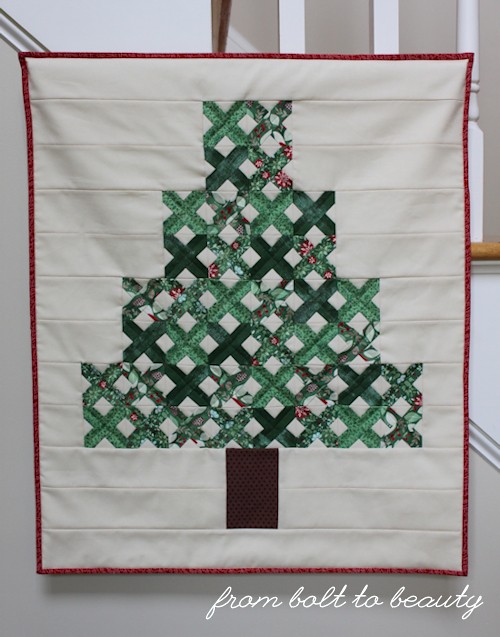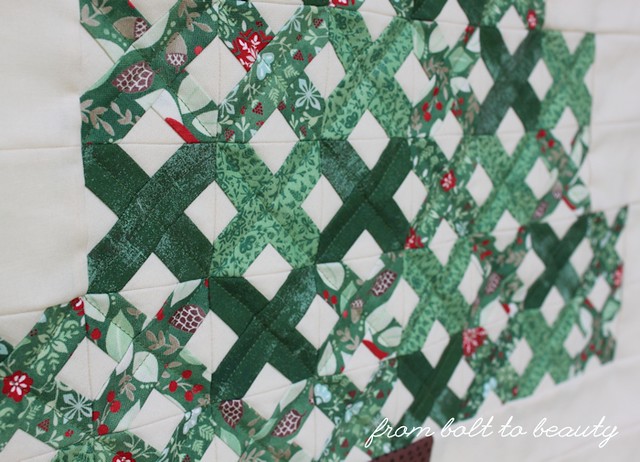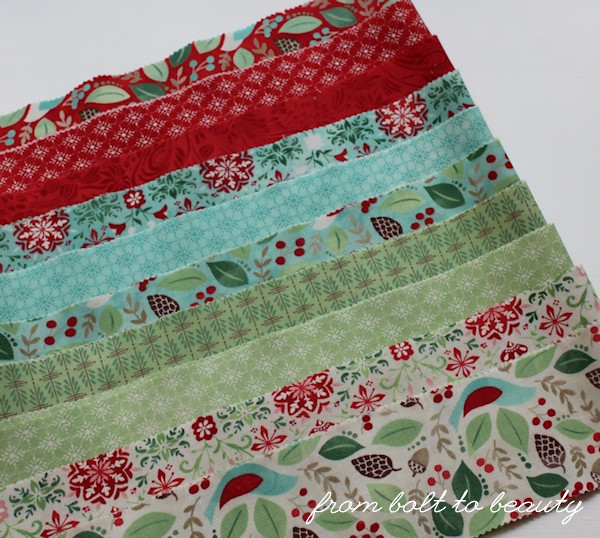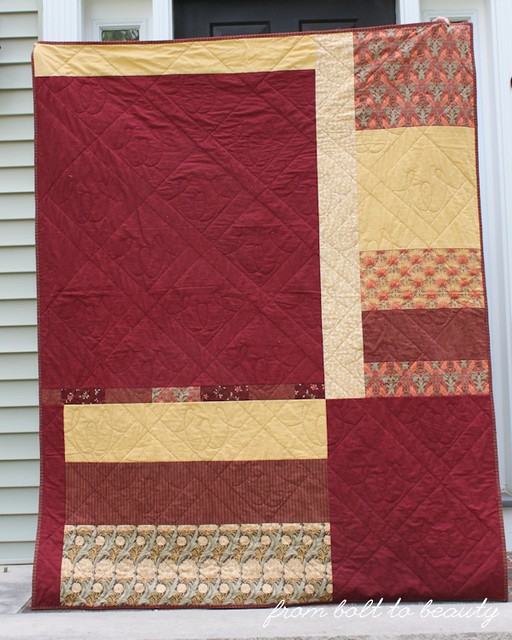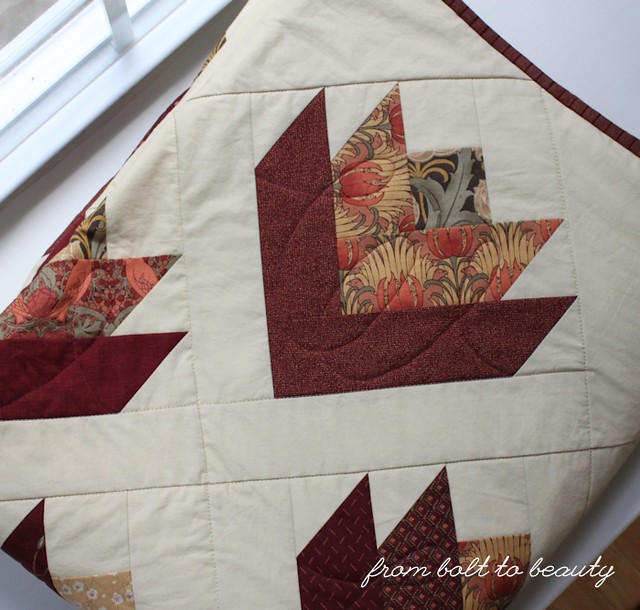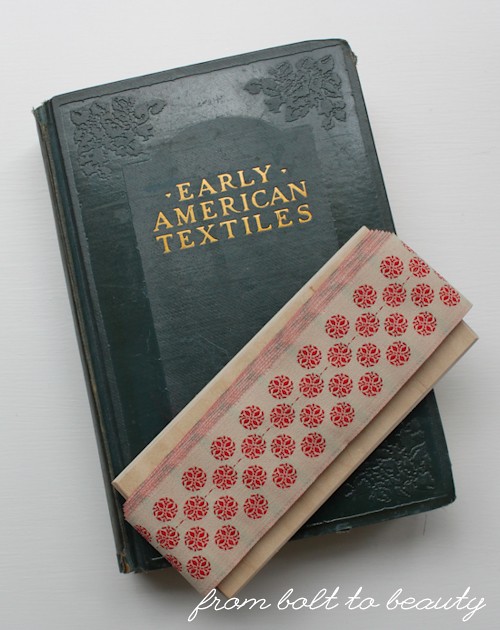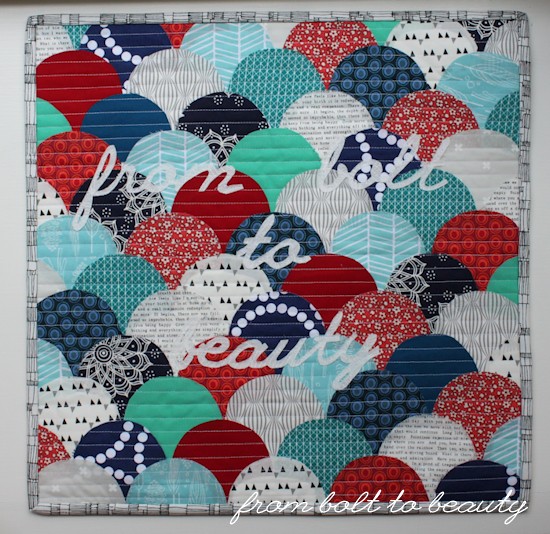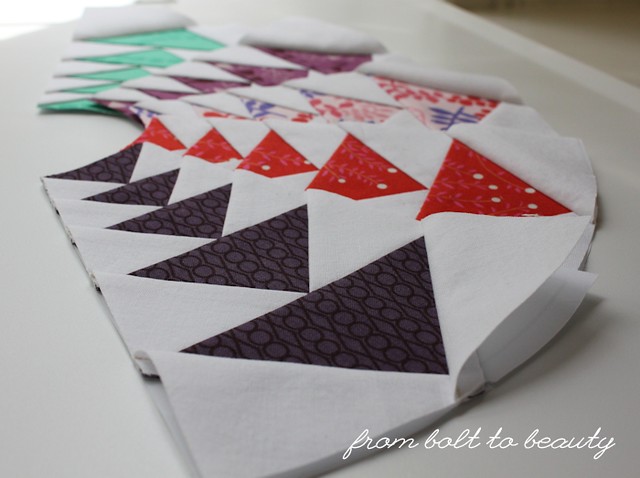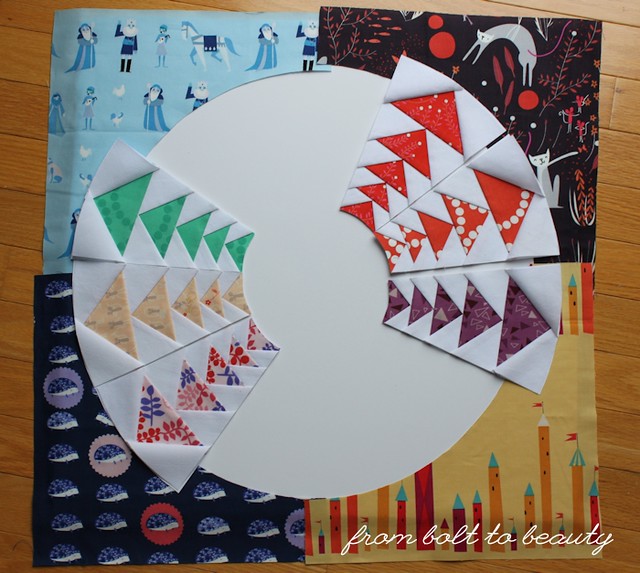Here’s the truth about my life and the sewing hobby I try to fit into it: I never have enough time. I spend most of my days parenting two little boys and trying to prevent my house from falling into shambles. Sewing is my sanity, and for it to serve as such, each project I start must have something in it for me, as the creator.
At times, that something is practical—like, I want to use up some long-overlooked fabric in my stash. At others, that something is a personal challenge—like, I want to prove to myself that I can paper-piece a quilt top or sew a Y-seam. More often than not, however, the something I’m looking for in a project is simply a forum for my own artistic expression.
So when my mother-in-law hinted that she wanted a quilt, I went about the planning it in my own way. In other words, I asked for no input. Really! Nothing—no color preferences, fabric suggestions, or pictures of quilts that she likes. Now, granted, I’ve known my MIL for almost twenty years. I know she likes décor items with an Asian feel. She decorates with pineapples, palm trees, and burgundy and gold. I have a much better idea of her taste than I do for many other people. But I first had to consider what I’d like to make, what I thought would be fun. This is the result of that process ...
When I started this project back in December, I wasn’t sure how I would quilt it. (For more information on the pattern, see that original post
here.) I ended up stitching in the ditch along the sashing, and then I bound the quilt, knowing that I wouldn’t be doing any more edge-to-edge quilting. By then my time had run out. I needed to finish this quilt for
Le Challenge’s “single” theme, and my MIL was due to arrive in a few days for a visit. I had researched free-motion quilting. I had practiced it. I had talked to anyone who cared to listen about it. The time had come to actually do it on a real quilt.
I decided to do a few swirls on each blossom. The upside? I was doing the exact same thing thirty-two times. I got better at it with each blossom. The downside? I had to bury scads of threads.
I strove for a symmetrical-ish look and smooth curves. I did rip out—
ahem—some lumpy parts (stopping and starting again in particular proved to be difficult), but most of my attempts were successful. I found it helpful to mark some guidelines in regular school chalk (doing so took some of the thinking out the quilting equation!). It’s a humble start, but it’s a triumph in the battle of Michelle versus FMQ!
Where do you stand on these issues? What feeds you, as the creator, in a given sewing or quilting project? How much say do recipients get in your creative process? And do you have any advice for a newbie FMQer? I’d like to try either a
Supreme Slider or a
Quilt Halo to help my projects glide under my darning foot. If you have an opinion on either of those products, I’m all ears!
Giveaway
Update: The giveaway is closed. The winner of the PDF pattern is none other than #33 Miss Audrey, of Hot Pink Quilts!
Today is the last day of school, which I fear may mean the end of my productive streak at my sewing machine. But I’m choosing to find the silver lining and celebrate with a giveaway!
Cheryl Brickey, the prolific pattern designer behind
Meadow Mist Designs, is releasing a new pattern today! For a chance to win her
Grande Scrappy Tiles in PDF form, simply leave a comment on this post. You can answer one of the questions I listed above or offer some advice on how I can squeeze sewing time in between play dates and trips to the park and afternoons at the pool. : )
This giveaway is open through Friday, June 26. If you need a copy right now, you can find this pattern, as well as others from Meadow Mist Designs, on
Etsy,
Craftsy, and
Payhip. Grande Scrappy Tiles is available now through July 4 at the special price of $6.
Cheryl is one talented lady! (One of my favorite patterns is her
Candy Circle quilt.) I highly recommend a visit to
her site.
Good luck and happy summer!
Linking up to
TGIFF,
Finish It Up Friday, and
Sew Cute Tuesday ...

